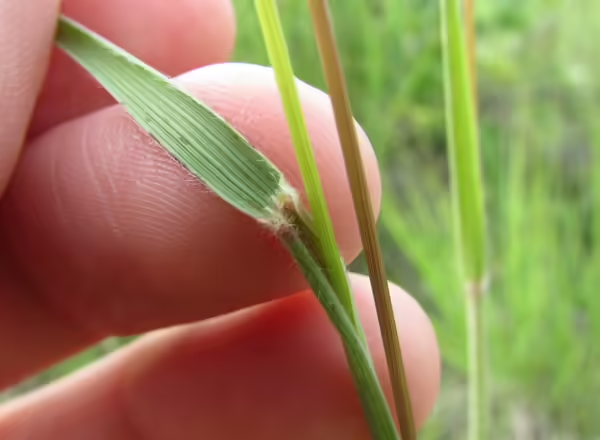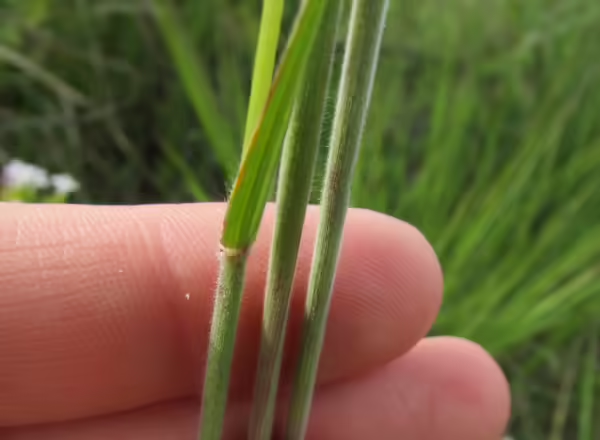Junegrass, Koeleria macrantha, is a short bunchgrass that can be found in Illinois prairies, where it is on the easternmost edge of its range, except for the populations found in Michigan. This grass can be found west of Illinois all the way to the west coast. It prefers to grow in sandier soils. Unlike many of our prairie grasses, Junegrass is a cool-season grass, meaning it starts up its growth in the spring and often flowers by late spring to early summer.
Identifying characteristics
Junegrass usually stays under 2 feet tall. Its leaves can be hairy or smooth, but the leaf sheaths (the part of the leaf that wraps around the stem), are typically covered in short, soft hairs. It has a short membranous ligule.
When it flowers, Junegrass has a very narrow panicle (branched flowering cluster), that almost resembles more of a spike (unbranched flowering cluster). The flowering units of the grass, called spikelets, are small and densely packed. The panicle is typically up to 6 inches long. After blooming, the panicle will turn a straw color.
In the home landscape
If you have sandier soil in your landscape beds, Junegrass can provide earlier growth and blooms than other native grasses of similar size like Prairie Dropseed, Side Oats Grama, and Little Bluestem.
Need a refresher on grass identification terms, like ligule and spikelet? Check out this blog post!


